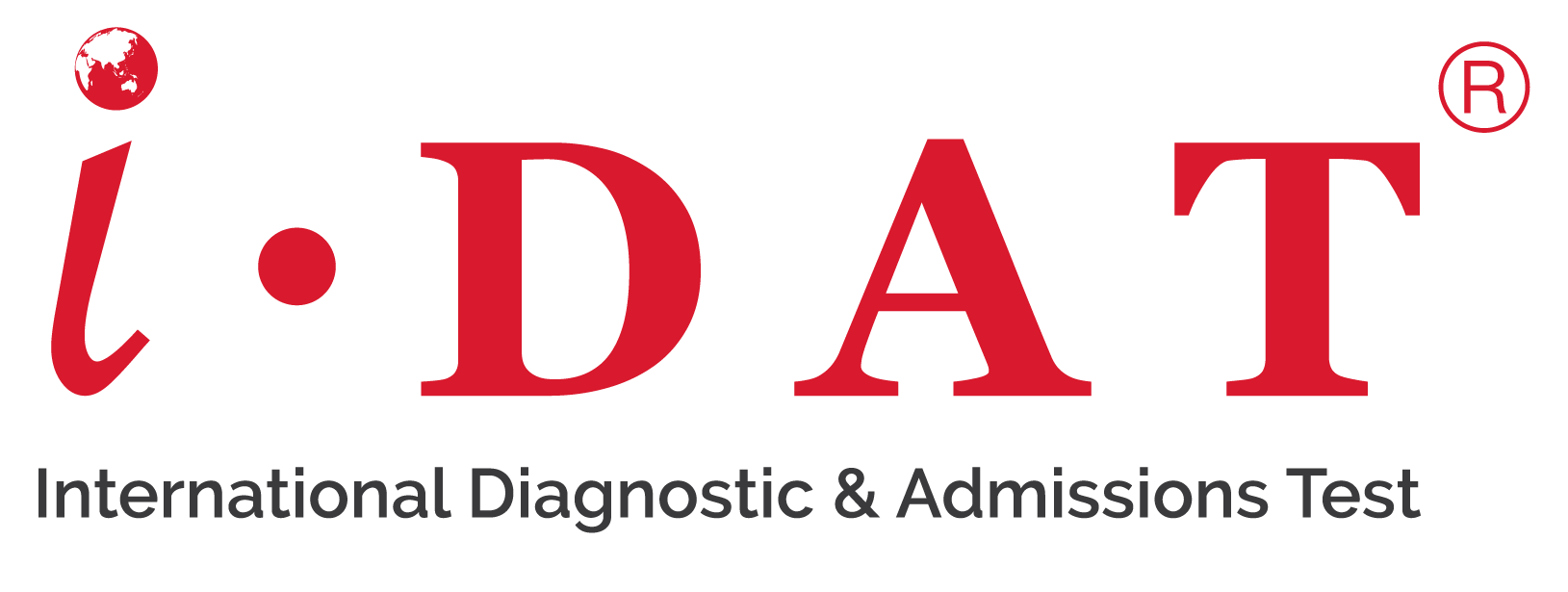IDATSS Information brochure
IDAT FOR SCHOLARSHIP STUDENTS
FOR SCHOOLS TO ASSESS THE STUDENTS APPLYING FOR SCHOLARSHIPS
The International Diagnostic and Admissions Test for Scholarship Students (IDATSS) is a unique and comprehensive way for schools to assess the academics, character, and critical thinking skills of students applying for scholarships.
The advantage of the IDATSS, is that is available everywhere and as the test is ever-changing and updating, schools can know about students’ true skills, knowledge and abilities and not be curtailed by simply how well students have crammed and prepared for other known and more popular tests. The IDATSS is a true assessment of student’s abilities and capabilities.
The IDATSS can be done using IDAT Secure 360 in a completely secure proctored environment in a student’s home or through school proctoring on campus. The school is the only one who will receive student results. To use IDATSS, schools need to register with IDAT at which time testing dates, parameters and information can be shared via schools to students and parents.
The IDATSS uses the same format as the regular IDAT or IDAT for IB. It includes Critical Thinking qualitative analysis by our test assessors like the IDAT for IB. It can include or exclude interviews, as requested by the schools.
The pricing of the test depends upon school requirements (which sections they require), testing conditions and test volume.
CRITICAL THINKING QUALITATIVE DESCRIPTORS
Critical Thinking Sections are based on the following qualitative descriptors
Students will be assessed on their abilities to critical analyse, express and reflect in their writing and character section. Critical thinking is an essential skill for leadership and a highly valued part of the IDATSS.
The IDAT for Scholarships Students incorporates a score and assessment of students’ critical thinking abilities into the writing, speaking and character test. This assessing is done by qualitative assessors who review the Critical Thinking Descriptors and apply this criterion to students’ written and spoken replies in the test. Students will be assessed on the original thoughts and ideas they can demonstrate in their writing in the test. They should try to demonstrate their abilities to think independently, share original ideas, and express their own point of view. Please see our descriptors to understand how to achieve high scores for critical thinking.
DESCRIPTORS CRITICAL ANALYSES
Student lacks the language to be able to analyse the texts in a basic way.
Misses, mis-identifies or mis-states some key/obvious points.
Merely lists or describes points in the material, without fully understanding what has been read. Incorrectly describes important facts or relationships.
Appropriately identifies and describes main points in a text or an issue. Can apply previous knowledge to materials to draw obvious conclusions.
Identifies critical points that are typically overlooked and uses some original ideas regarding the materials.
Can connect complex ideas using imagery, analogies and symbolism from a range of sources. Can identify and interpret main points and analyse information for rationale and evidence. Displays insight regarding the material.
DESCRIPTORS CRITICAL REFLECTION
Fails to produce an outcome that is accurate, usable or acceptable. Does not meet the objective or purpose of the task.
Merely lists or describes facts without exposing relationships among facts.
Student able to come up some original ideas and explanations but lacks cohesion. Some points not relevant to purpose.
Can accurately describe relevance of points. Student able to think logically and thoroughly about information and apply solutions but may lack originality or independent thought.
Can critically analyse sources to determine possible bias. Can use logical and abstract information to synthesise information to create explanations and identify thoughts and processes.
Creatively and appropriately applies principles or procedures. Can insightfully and thoroughly explain ideas and creativity.
DESCRIPTORS CRITICAL EXPRESSION
Student lacks the language to be able to express thoughts in a critical way.
Fails to explain self accurately. Student can write some thoughts and ideas but lacks base vocabulary or grammar, which interferes with meaning of expression.
Adequately applies structure of writing and addresses the issue but lacks originality and cohesion of thought and conclusion.
Can accurately describe relevance of points. Can correctly and logically defend own point of view.
Student can give reasons to support their thinking, addressing opposing viewpoints and possible weaknesses to their position. Can identify, plan and transfer knowledge to new contexts.
Develops and creates an outcome that is accurate and proper yet novel or outstanding. Ability to exceed basic purpose of objective.

“IDAT’s curriculum-informed diagnostic testing that is benchmarked to ensure levels are appropriate to the student’s current grade and the ability to assess critical thinking skills of applicants has given us a reliable and comprehensive assessment of our scholarship applicants in a completely online environment.”
Brad Fry, Principal | Tintern Grammar Ringwood, VIC Australia

